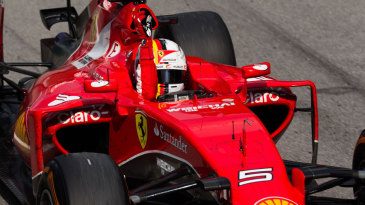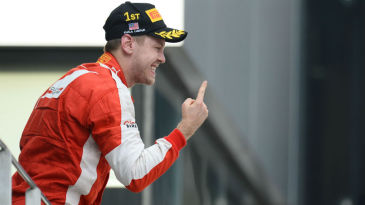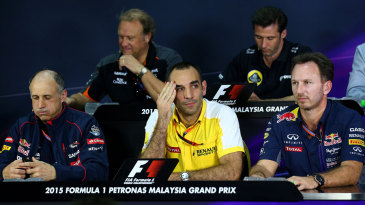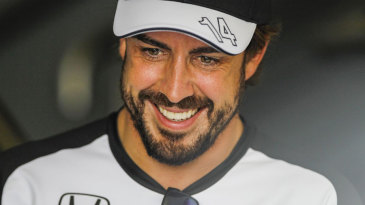
| Year | Engine | Driver | Race | Start | Won | Pod | Class | Best | 1+2 | Pole | Front | Best | Lap | Pts | Pos | ||||
|---|---|---|---|---|---|---|---|---|---|---|---|---|---|---|---|---|---|---|---|
| 1950 | JAP | H Schell | 1 | 1 | 0 | 0 | 0 | - | 0 | 0 | 0 | 19 | 0 | 0 | - | ||||
| 1952 | Bristol | E Brandon, A Brown, M Hawthorn, D Murray, R Parnell, K Wharton | 6 | 16 | 0 | 1 | 13 | 3 | 0 | 0 | 1 | 3 | 0 | 0 | - | ||||
| 1953 | Bristol | JD Barber, A Brown, T Crook, AJCS Cruz, FR Gerard, H Glockler, R Nuckey, J Stewart, K Wharton | 7 | 16 | 0 | 0 | 7 | 7 | 0 | 0 | 0 | 9 | 0 | 0 | - | ||||
| Alta | SC Moss, P Whitehead | 4 | 4 | 0 | 0 | 3 | 6 | 0 | 0 | 0 | 10 | 0 | 0 | - | |||||
| 1954 | Alta | P Whitehead | 1 | 1 | 0 | 0 | 0 | - | 0 | 0 | 0 | 24 | 0 | 0 | - | ||||
| Bristol | E Brandon, A Brown, FR Gerard, HH Gould | 1 | 3 | 0 | 0 | 2 | 10 | 0 | 0 | 0 | 18 | 0 | 0 | - | |||||
| 1955 | Bristol | JA Brabham | 1 | 1 | 0 | 0 | 0 | - | 0 | 0 | 0 | 25 | 0 | 0 | - | ||||
| 1956 | Bristol | FR Gerard | 1 | 1 | 0 | 0 | 1 | 11 | 0 | 0 | 0 | 22 | 0 | 0 | - | ||||
| 1957 | Climax | JA Brabham, P England, R Gibson, L Leston, M MacDowel, A Marsh, JB Naylor, R Salvadori | 5 | 13 | 0 | 0 | 6 | 5 | 0 | 0 | 0 | 13 | 0 | 0 | - | ||||
| Bristol | FR Gerard | 1 | 1 | 0 | 0 | 1 | 6 | 0 | 0 | 0 | 18 | 0 | 0 | - | |||||
| 1958 | Climax | JA Brabham, T Bridger, I Burgess, R La Caze, J Fairman, R Flockhart, R Gibson, C Goethals, A Guelfi, LB McLaren, A Marsh, SC Moss, JB Naylor, F Picard, R Salvadori, W Seidel, M Trintignant | 10 | 40 | 2 | 5 | 27 | 1 | 0 | 0 | 2 | 3 | 0 | 31 | 3 | ||||
| 1959 | Climax | P Ashdown, L Bianchi, JA Brabham, ILJ Bueb, AC de Changy, G Constantine, J Fairman, K Greene, M Gregory, J Lucienbonnet, LB McLaren, SC Moss, WF Moss, T Parnell, G Scarlatti, H Schell, H Taylor, M Taylor, T Taylor, M Trintignant | 8 | 42 | 5 | 13 | 26 | 1 | 2 | 5 | 16 | 1 | 5 | 53 | 1 | ||||
| Maserati | I Burgess, MVD Cabral, C Davis, J Fairman, H Herrmann, R Salvadori | 7 | 12 | 0 | 0 | 5 | 6 | 0 | 0 | 0 | 8 | 0 | 0 | - | |||||
| Borgward | C Bristow, ILJ Bueb | 1 | 2 | 0 | 0 | 2 | 10 | 0 | 0 | 0 | 16 | 0 | 0 | - | |||||
| Osca | A de Tomaso | 1 | 1 | 0 | 0 | 0 | - | 0 | 0 | 0 | 14 | 0 | 0 | - | |||||
| 1960 | Climax | L Bianchi, JA Brabham, C Bristow, A Brooks, CH Daigh, P Drogo, J Fairman, R Flockhart, O Gendebien, JCPAJH Godin de Beaufort, BH Halford, P Hill, LB McLaren, SC Moss, A Owen, R Salvadori, H Schell, W Seidel, H Taylor, M Trintignant, V Wilson | 9 | 52 | 6 | 14 | 33 | 1 | 3 | 4 | 11 | 1 | 5 | 58 | 1 | ||||
| Maserati | RW Bonomi, I Burgess, MVD Cabral, K Greene, M Gregory, CA Menditeguy, G Scarlatti, AP Thiele, M Trintignant, W von Trips | 8 | 17 | 0 | 0 | 7 | 4 | 0 | 0 | 0 | 5 | 0 | 3 | 5 | |||||
| Castellotti | G Cabianca, G Munaron, G Scarlatti | 3 | 4 | 0 | 0 | 2 | 4 | 0 | 0 | 0 | 4 | 0 | 3 | 6 | |||||
| Ferrari | GC Lovely | 1 | 1 | 0 | 0 | 1 | 11 | 0 | 0 | 0 | 20 | 0 | 0 | - | |||||
| 1961 | Climax | JA Brabham, I Burgess, NB Collomb, J Fairman, M Gregory, W Hansgen, J Lewis, LB McLaren, R Penske, R Salvadori, JR Sharp, J Surtees | 8 | 44 | 0 | 1 | 26 | 3 | 0 | 1 | 2 | 1 | 1 | 18 | 4 | ||||
| Maserati | L Bandini, M Natili, R Pirocchi, M Trintignant | 6 | 11 | 0 | 0 | 6 | 7 | 0 | 0 | 0 | 15 | 0 | 0 | - | |||||
| 1962 | Climax | I Burgess, NB Collomb, J Lewis, JML Love, LB McLaren, AFO Maggs, T Mayer, JR Sharp | 9 | 28 | 1 | 7 | 20 | 1 | 0 | 0 | 3 | 2 | 1 | 37 | 3 | ||||
| Alfa Romeo | M Harris | 1 | 1 | 0 | 0 | 0 | - | 0 | 0 | 0 | 15 | 0 | 0 | - | |||||
| 1963 | Climax | J Bonnier, MVD Cabral, FJ Dochnal, JML Love, LB McLaren, AFO Maggs | 10 | 32 | 0 | 4 | 21 | 2 | 0 | 0 | 1 | 3 | 0 | 26 | 5 | ||||
| Maserati | JT Blokdyk, E Brambilla | 1 | 1 | 0 | 0 | 1 | 12 | 0 | 0 | 0 | 19 | 0 | 0 | - | |||||
| 1964 | Climax | E Barth, J Bonnier, P Hill, JML Love, LB McLaren, JC Rudaz | 10 | 21 | 0 | 2 | 11 | 2 | 0 | 0 | 0 | 5 | 0 | 16 | 5 | ||||
| Ford | J Taylor | 1 | 1 | 0 | 0 | 1 | 14 | 0 | 0 | 0 | 20 | 0 | 0 | - | |||||
| 1965 | Climax | JML Love, LB McLaren, J Rhodes, KJ Rindt | 10 | 21 | 0 | 1 | 10 | 3 | 0 | 0 | 0 | 7 | 0 | 14 | 5 | ||||
| 1966 | Maserati | CA Amon, J Bonnier, R Ginther, G Ligier, KJ Rindt, J Siffert, M Solana, J Surtees | 9 | 39 | 1 | 6 | 16 | 1 | 0 | 1 | 4 | 1 | 2 | 35 | 3 | ||||
| Ferrari | C Lawrence | 2 | 2 | 0 | 0 | 1 | 11 | 0 | 0 | 0 | 18 | 0 | 0 | - | |||||
| 1967 | Maserati | RJD Attwood, J Bonnier, J Ickx, G Ligier, AB Rees, KJ Rindt, P Rodríguez, J Siffert | 11 | 42 | 1 | 1 | 22 | 1 | 0 | 0 | 0 | 4 | 0 | 28 | 3 | ||||
| Climax | T Jones, JML Love | 1 | 1 | 0 | 1 | 1 | 2 | 0 | 0 | 0 | 5 | 0 | 6 | 9 | |||||
| A.T.S. | S Moser | 1 | 1 | 0 | 0 | 0 | - | 0 | 0 | 0 | 20 | 0 | 0 | - | |||||
| 1968 | BRM | L Bianchi, V Elford, BT Redman, L Scarfiotti, J Servoz-Gavin, R Widdows | 11 | 20 | 0 | 2 | 8 | 3 | 0 | 0 | 0 | 5 | 0 | 14 | 7 | ||||
| Climax | B van Rooyen | 1 | 1 | 0 | 0 | 0 | - | 0 | 0 | 0 | 20 | 0 | 0 | - | |||||
| Maserati | J Bonnier, BT Redman, L Scarfiotti, J Siffert | 1 | 4 | 0 | 0 | 1 | 7 | 0 | 0 | 0 | 15 | 0 | 0 | - | |||||
| 1969 | Maserati | V Elford | 1 | 1 | 0 | 0 | 1 | 7 | 0 | 0 | 0 | 16 | 0 | 0 | - | ||||
| Total | 129 | 499 | 16 | 58 | 282 | 1 | 6 | 11 | 40 | 1 | 14 |
| Race | Circuit | Date | ||
|---|---|---|---|---|
| First race | Monaco Grand Prix | Monaco | May 21, 1950 | Race results |
| Last race | Monaco Grand Prix | Monaco | May 18, 1969 | Race results |
Cooper was responsible for the switch to rear-engined cars in Formula One, a move that won back-to-back World Championship titles for Jack Brabham in 1959 and 1960.
It all began when Charles Cooper, a racing mechanic before the Second World War, built his son John a 500cc motorcycle-engined racing car. Using a chain-driven JAP engine, the thinking was that the car had to have the power unit close to the driven rear axle, with the cockpit in front.
The cars were very successful and the Cooper Car Company was established to build more of them. Their 500cc Formula Three cars quickly began to dominate, but there were doubts about whether the same principles could be successfully applied with more potent machinery. People were mindful of the difficult rear- engined Auto Unions of the 1930s.
Cooper concentrated on other projects before returning to the mid-engined concept. An experimental Cooper was run by Jack Brabham in the 1955 British Grand Prix, equipped with a 2-litre, six-cylinder Bristol engine. A new 1500cc Formula Two class was due for introduction in 1957 and Cooper geared up for it by putting a Climax engine in the back of a developed version of its earlier chain-driven Formula Three car. Enlarged versions of the cars made a few grand prix appearances during the 1957 season and clearly outhandled the bigger front-engined machinery. However, they were too underpowered to do any serious damage.
For 1958, Rob Walker - heir to the huge Johnny Walker whisky fortune - ordered a new engine from Coventry Climax for a Cooper and recruited Stirling Moss. Moss beat the Ferraris in Argentina in his blue Cooper T45, fooling the Ferraris into thinking he would need a tyre stop but driving cautiously so that he made the finish without one, although his rubber was worn through to the carcass. It was the first World Championship win by both a rear-engined and privately entered car. Moss reverted to a Vanwall thereafter, but Maurice Trintignant won in Monte Carlo aboard the Cooper.
The cars were still underpowered, but it was clear that the rear-engined concept had merit, although Vanwall recovered and won the constructors' championship. By 1959, Vanwall had withdrawn from Formula One and Jack Brabham, working closely with John Cooper, helped develop the T51. Coventry-Climax produced a 2.5-litre engine, thus giving Cooper competitive engines for the first time.
Brabham won both the Monaco and British Grands Prix and his World Championship win was sealed when team-mate Bruce McLaren became the youngest winner of a grand prix, aged 22, at Sebring.
The United States Grand Prix was new on the calendar that year and Moss had given himself a second successive shot at the title in the last race of the year by winning the previous two races in Rob Walker's private Cooper. He took off into the lead at Sebring, but retired with a common gearbox failure, leaving the championship to either Brabham or Tony Brooks, who could win for Ferrari if he took the race with Brabham failing to score. Brabham led but ran out of petrol on the final lap, leaving McLaren to beat Trintignant, with Brooks third. New champion Brabham pushed his Cooper across the line in fourth place.
New Coopers were built for 1960 and, after McLaren won the opening race, Brabham scored five consecutive wins to make sure of back-to-back championship wins. Cooper's pioneering development was overtaken by more sophisticated designs from Ferrari, BRM and Lotus over the following seasons. Cooper fought back with a monocoque chassis in 1966, but its Maserati and then its BRM engines were not competitive. In addition, John Cooper had been seriously injured driving an experimental Mini Cooper. The marque disappeared from Formula One at the end of 1968.
Reproduced from The Ultimate Encyclopedia of Formula One published by Carlton Books
- Hill makes it five in Monaco (May 18, 1969)
- Hill secures second world title (November 3, 1968)
- Stewart beats Hill to set up finale (October 6, 1968)
- Hulme capitalises on Amon misfortune (September 22, 1968)
- Hulme rejoins title battle (September 8, 1968)




